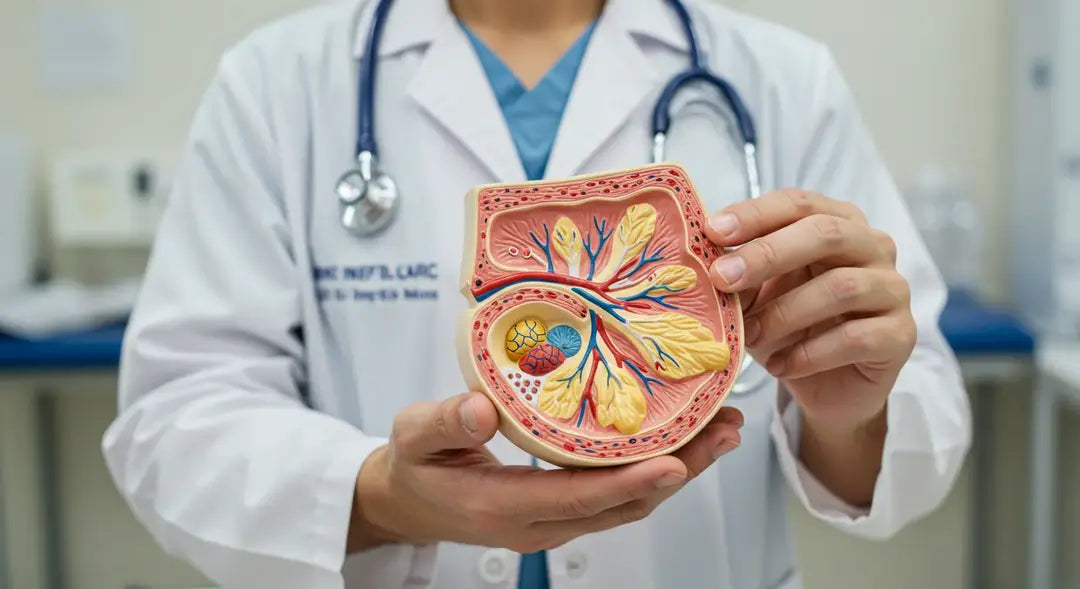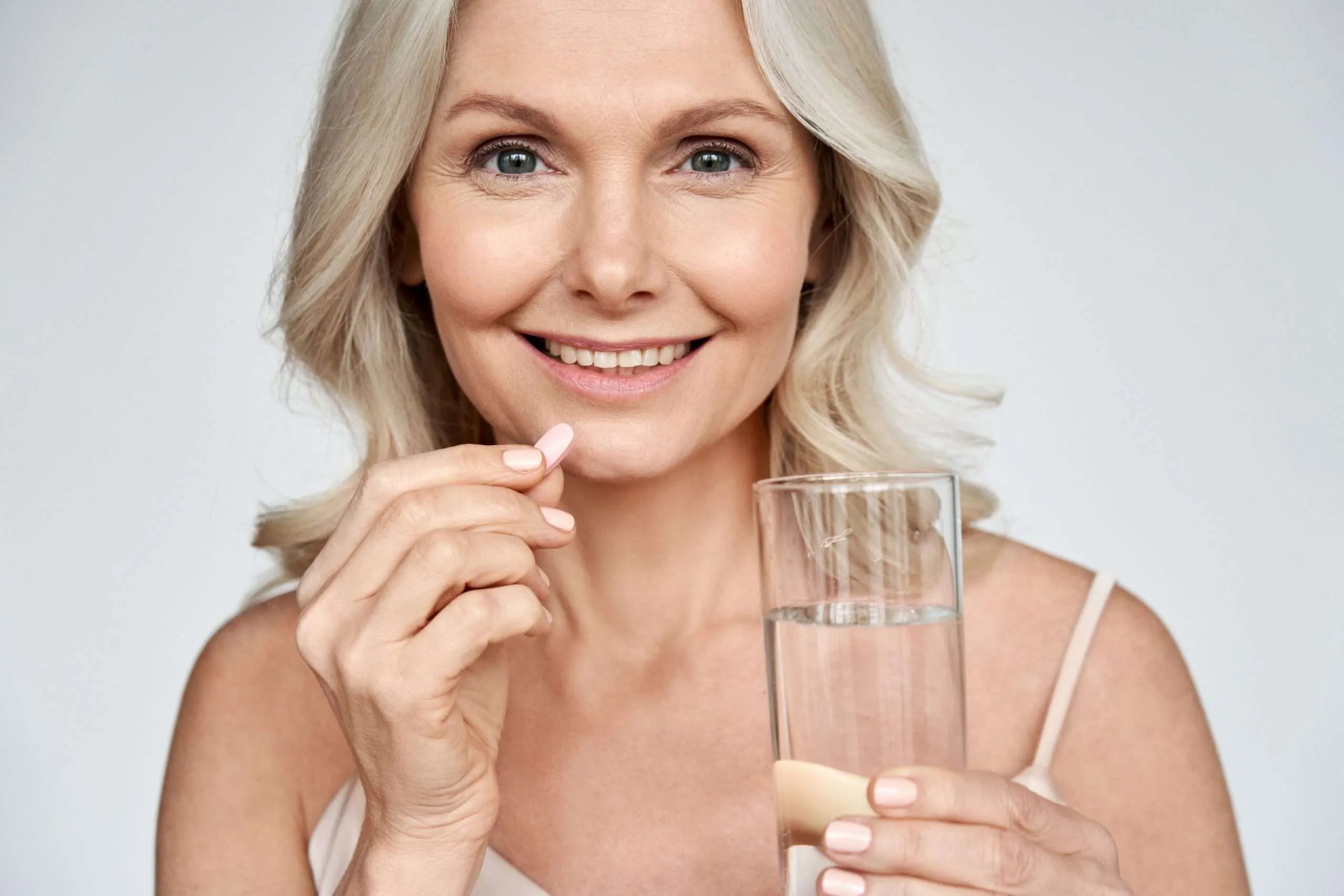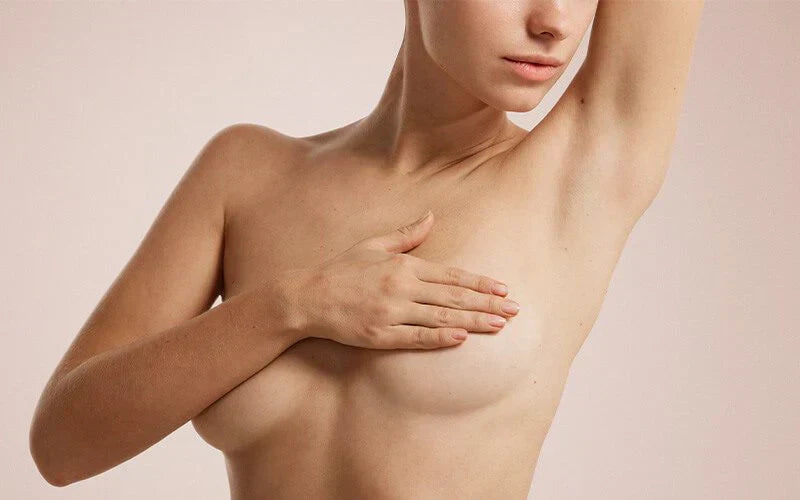If you've noticed lumps or increased sensitivity in your breasts, it's completely normal to feel concerned. But before jumping to conclusions or fearing it might be cancer, it's important to learn about fibrocystic breast disease, a common and benign condition affecting the female reproductive system that could be behind your symptoms.
In this article, we’ll clearly explain what this condition is and why there’s no need to panic.
What is fibrocystic breast disease and why does it matter?
Fibrocystic breast disease isn’t a disease, but rather a group of changes that occur in the breast tissue. These changes include the development of fluid-filled cysts and areas of thickened or fibrous tissue. Also, these can lead to breast tenderness. These symptoms may affect one or both breasts and tend to become more noticeable before your period (1,2) .
While the condition can be uncomfortable, it does not increase your risk of breast cancer (1,3). Still, it’s important to distinguish it from other conditions and to see a doctor if you notice any unusual changes in your breasts.
Common causes and risk factors of fibrocystic breast disease

Many women experience fibrocystic changes in their breasts at some point in their lives. This condition is most common in women between the ages of 35 and 50, during their reproductive years. It tends to occur less frequently after menopause, although it can still appear in women undergoing hormone replacement therapy (1-4).
The exact causes aren’t fully understood, but it is known to be linked to (1-3):
-
Hormonal fluctuations during the menstrual cycle.
-
Excess estrogen (estrogen dominance).
This condition may also occur alongside other hormonal issues, such as ovarian cysts or uterine fibroids (4). These disorders can lead to pelvic pain and irregular menstrual cycles.
Symptoms of fibrocystic breast disease
Some women don’t experience any symptoms at all, while others may notice the following (1-4):
-
Breast pain or tenderness (especially before your period).
-
Lumps in the breasts that change in size throughout the menstrual cycle
-
A feeling of heaviness or swelling in the breasts.
-
In some cases, nipple discharge that is green or dark brown (non-bloody).
These symptoms usually get worse during the second half of the menstrual cycle and improve once your period begins (1-3). Unlike breast cancer, these changes tend to be symmetrical (affecting both breasts) and fluctuate with your cycle.
Evaluation and diagnosis of fibrocystic breast disease
If you notice lumps or changes in your breasts, be sure to consult your doctor. They will recommend the necessary tests to determine whether your symptoms are caused by fibrocystic changes or another condition (2,3).
Diagnosis may include (1-3):
-
A physical exam to assess the characteristics of the lumps.
-
Breast ultrasound to distinguish fluid-filled cysts from other types of tissue.
-
Mammogram, if needed, to rule out abnormalities.
-
Needle biopsy, in uncertain cases, to confirm that the changes are benign.
Treatment and management of fibrocystic breast disease
In most cases, fibrocystic breast disease doesn’t require any specific medical treatment, especially if the symptoms are mild or barely noticeable. Many women manage their condition with simple lifestyle adjustments and regular monitoring. However, if the symptoms become uncomfortable or start to interfere with daily life, several treatment options are available to help ease the discomfort and improve quality of life (1-4):
-
Over-the-counter pain relievers.
-
Cyst drainage.
-
Hormone therapy.
-
Routine checkups.
Additionally, some women find relief through lifestyle changes, such as wearing a supportive bra, reducing caffeine and salt intake, or applying warm or cold compresses to ease soreness. While these approaches don’t cure the condition, they can make living with it more manageable.
At-home remedies and lifestyle changes
The following tips can help you manage fibrocystic breast disease more comfortably (1-4):
-
Wear a well-fitting bra for better support.
-
Maintain a healthy diet and lifestyle.
-
Apply warm compresses to the affected area.
-
Cut back on coffee (though evidence is limited).
-
Exercise regularly to improve poor circulation.
-
Manage acute stress, which may worsen symptoms.
-
Be careful during hair removal in the armpits or areas near the breasts to avoid irritation.
Some women find relief with supplements like evening primrose oil but always talk to your doctor before taking any supplements (2,3).
Breast health tips for everyday wellness
While this breast disease can’t be prevented, you can take steps to care for your breast health with these habits (3,5):
-
Do a monthly self-exam to get familiar with your breast tissue and spot any changes early.
-
Schedule regular gynecological checkups, especially if you have risk factors.
In conclusion, fibrocystic breast disease is a common and benign condition that affects many women. While it can be uncomfortable, it’s not dangerous and doesn’t increase your risk of breast cancer. With proper care and routine checkups, you can support your breast health and feel more at ease.
If you have ongoing symptoms or concerns, always reach out to a healthcare professional. Your health comes first.
Bibliographic References
-
NHS. NHS. [Online]; 2023 [cited 2025 Apr 3]. Available from: https://www.uhsussex.nhs.uk/resources/fibrocystic-breast-changes/.
-
Cancer Research UK. Cancer Research UK. [Online]; 2023 [cited 2025 Apr 3]. Available from: https://www.cancerresearchuk.org/about-cancer/other-conditions/fibrocystic-breast-changes.
-
Mayo Clinic. Fibrocystic breasts. [Online]; 2023 [cited 2025 Apr 3]. Available from: https://www.mayoclinic.org/es/diseases-conditions/fibrocystic-breasts/symptoms-causes/syc-20350438.
-
Fibroid Institute Texas. Fibrocystic Breast Disease and Fibroids: The Link Myth. [Online]; 2022 [cited 2025 Apr 3]. Available from: https://www.fibroidfree.com/fibroids/fibrocystic-breast-disease-and-fibroids/
-
NHS. How to check your breasts or chest. [Online]; 2024 [cited 2025 Apr 3]. Available from: https://www.nhs.uk/conditions/how-to-check-your-breasts-or-chest/.
You May Also Like

JOIN US AND GET 10% OFF
Sign up to our newsletter to access free resources, advice and support.















